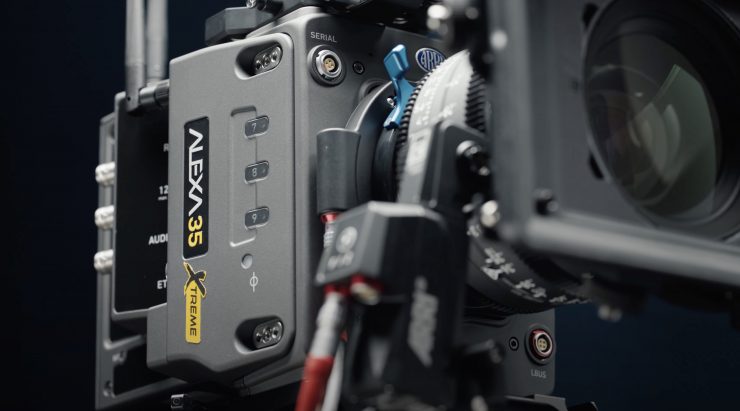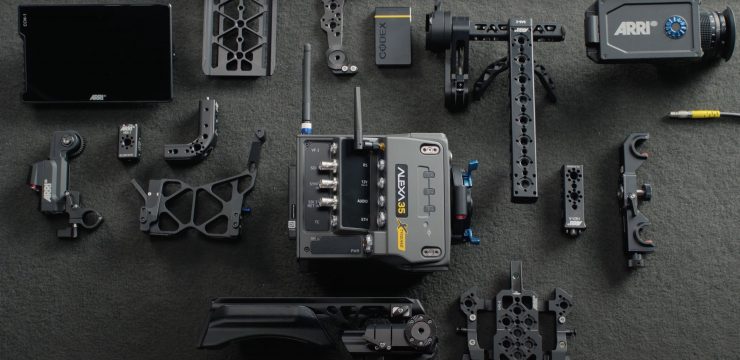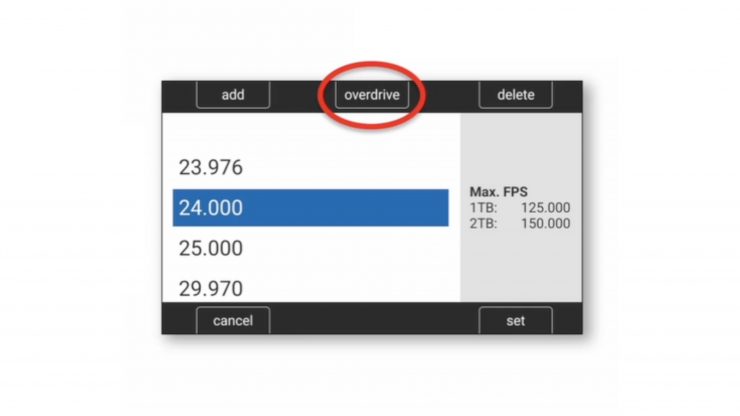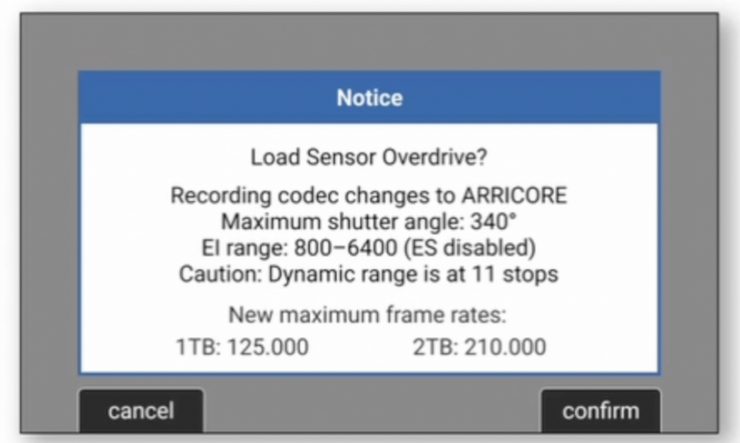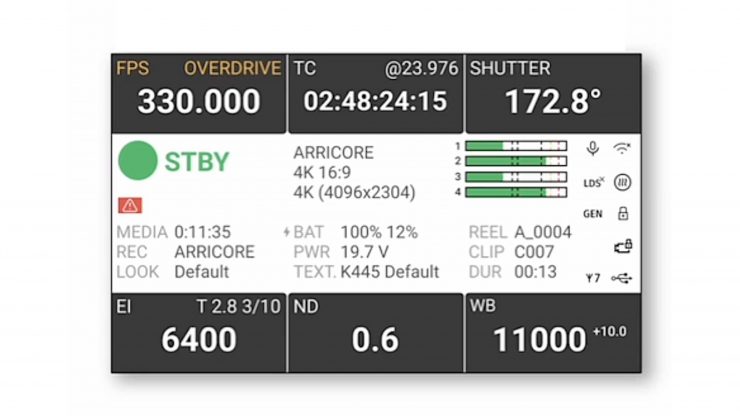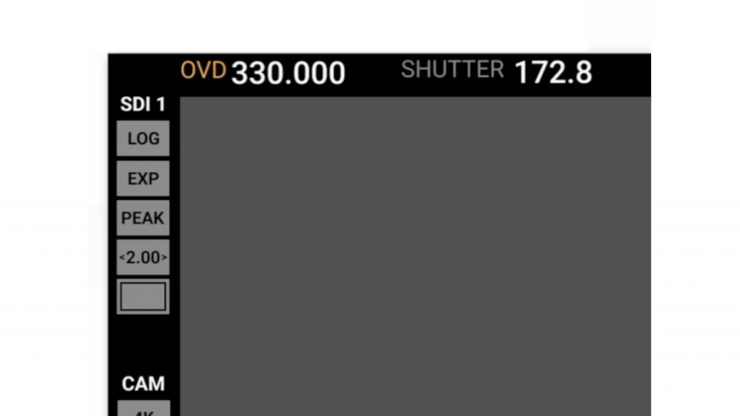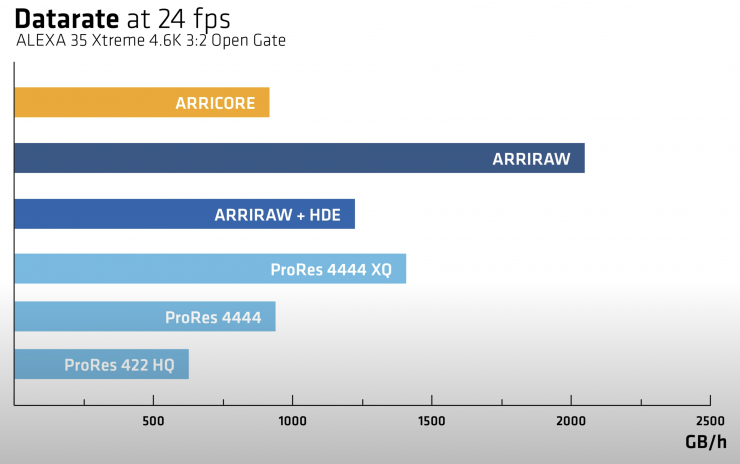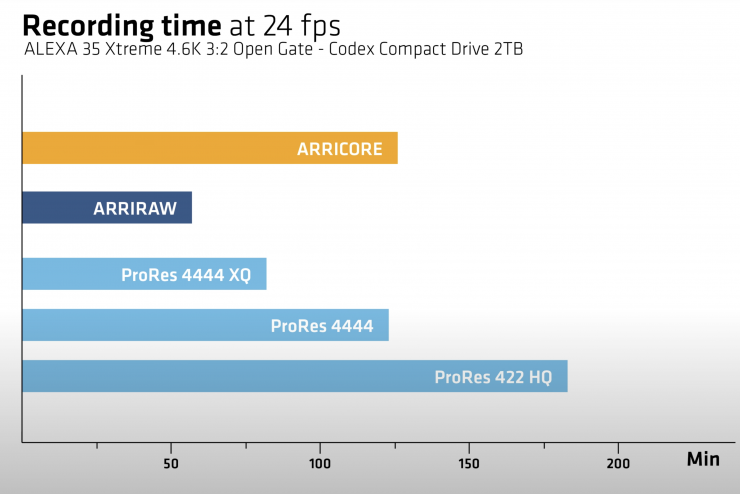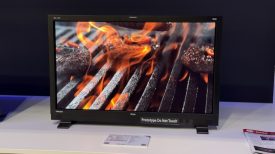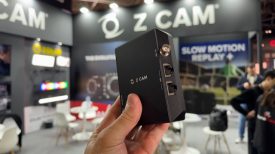![20250731 4 arri alexa 35 xtreme application shot[22]](jpg/20250731-4-arri-alexa-35-xtreme-application-shot22-740x416.jpg)
ARRI has announced its new ALEXA 35 Xtreme, its latest addition to the ALEXA 35 family. What is the ALEXA 35 Xtreme? It’s an extension of the ALEXA 35, but it has a new processor inside, a new extra board, more memory, faster frame rates, and a new antenna.
It will replace the ALEXA 35, and it includes almost all ALEXA 35 features. In addition, it offers high-speed shooting capabilities of up to 660 frames a second, a new codec that is called ARRICORE, five times longer pre-recording, lower power consumption, better Wi-Fi, streamlined recording formats, and backwards compatibility with all the ALEXA 35 accessories.
The ALEXA 35 Xtreme is backward compatible, so it’s the same housing, same connectors, and same mechanical interfaces as the original ALEXA 35. This means it works with all the existing electronic and mechanical accessories
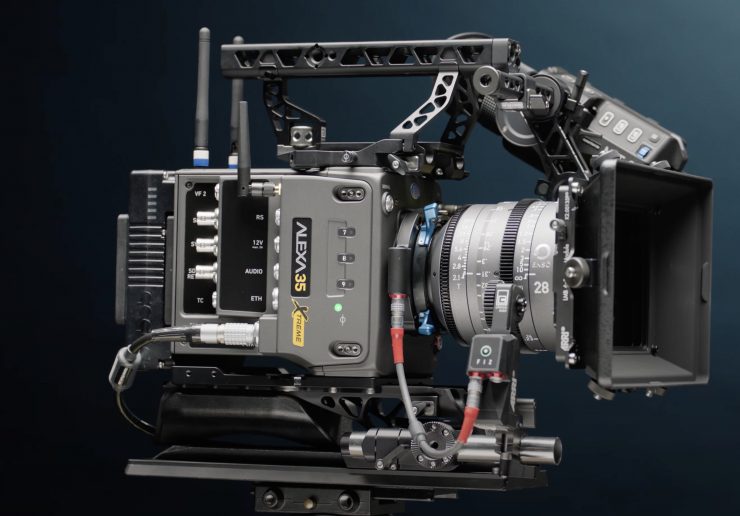
ARRI will be selling the ALEXA35 Xtreme in the same way they have been selling the ALEXA 35, in various sets. There will be camera sets, a premium set, and a base set. The base set can be upgraded with the same licenses that have been available for the ALEXA 35. ARRI is also keeping the prices for the camera sets and for the licenses exactly the same.
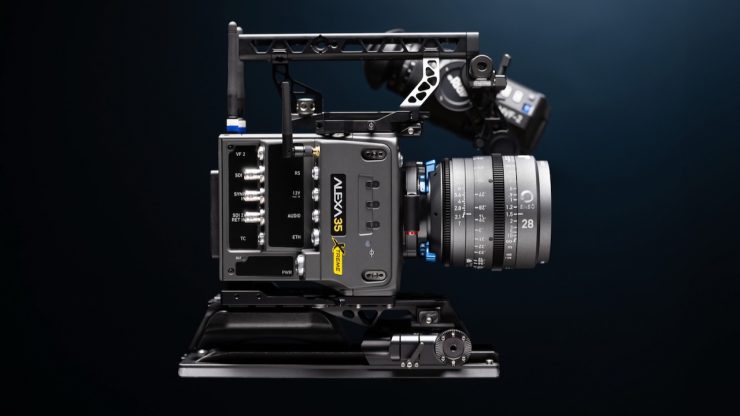
Key features
- High speed up to 660 fps
- New ARRICORE codec
- 5x longer pre-recording
- 10% lower power consumption
- Improved WiFi
- Streamlined recording formats
- Backwards compatibility with ALEXA 35 accessories
A nostalgic nod to its past
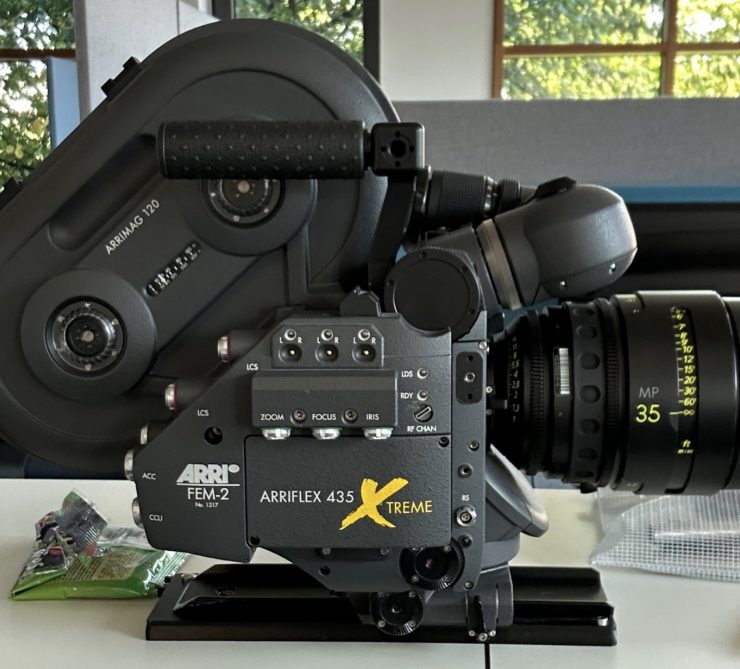
If you have a good memory, you will remember the ARRI 435 Xtreme, which was capable of shooting frame rates of up to 150fps and was announced back in 2004. ARRI is playing on its history and heritage with a nostalgic nod to its past by calling the new camera the ALEXA 35 Xtreme.
A lot of movies and television series have now been shot with the ALEXA 35. ARRI has sold thousands of the cameras, and according to the company, it has been a very successful product for them.
ARRI told me that whenever they talk to customers, a vast majority of them ask for three main things:
- Image quality for live events
- High speed
- Lower data rates
For image quality for live events, they have the ALEXA 35 Live, and for the other two things, they now have ALEXA 35 Xtreme.
You can upgrade an existing ALEXA 35 to an Xtreme
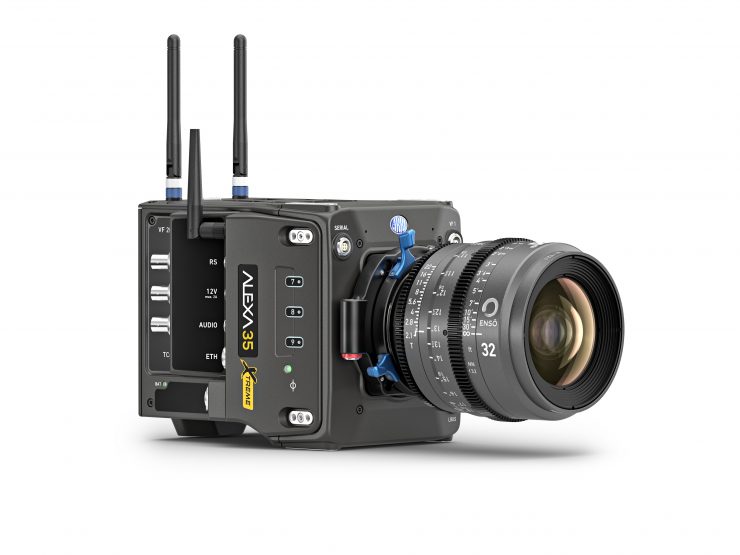
Not only is the ALEXA 35 Xtreme a new camera, but ARRI is also offering an upgrade to existing ALEXA 35, including base, premium, and live. All of them can be upgraded, and that can be done by sending your camera to selected service centers.
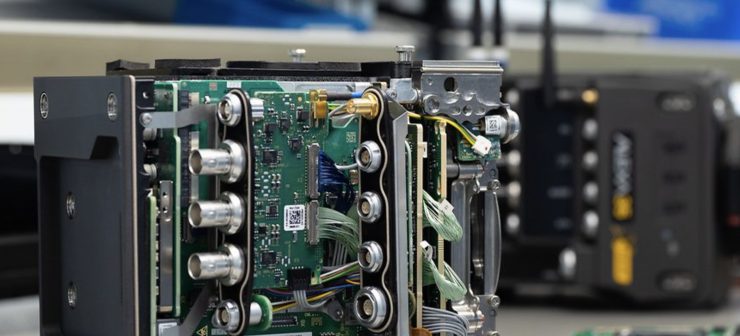
It’s a little bit of brain surgery because there’s a new motherboard, and there’s a new extra board. ARRI has to take the whole camera apart and put it back together, and in order to achieve some of these higher speeds using the extra processing power, the cameras need to undergo new calibrations. Each calibration takes a long time. It takes around 12 hours to upgrade the camera, and then around another 20 hours to go through all of the calibrations.
ARRI told me that they expect it to take around a week per camera to do the upgrade. So far, they have already equipped their Munich, London, Los Angeles, Hong Kong, and Sydney service centers with the ability to do the upgrade. Some other service centers around the world should also be able to do it moving forward, but that is yet to be officially confirmed.
The upgraded cameras will be able to do exactly the same as a newly purchased ALEXA 35 Xtreme, so there’s no difference between the upgrade and the new camera. Any licensees that have been installed will also be retained. So if you had an ALEXA 35 base with an ARRIRAW license, you send it to upgrade, then you’re going to have an ALEXA 35 Xtreme base with an ARRIRAW license.
The ALEXA 35 Multicam system will remain based on the classic ALEXA 35 live camera. You could theoretically use the Xtreme for the multicam system (as it’s compatible), but there’s no advantage because the higher speeds you can record onto the drive don’t come out of the SDI connector. Until ARRI figures out how to do that, the multicam system, if you buy a new one, will be based on the classic ALEXA 35.
The cost of upgrading any existing ALEXA 35 to an Xtreme will be 15,900 euros for parts and labor.
It is good that ARRI is offering this upgrade capability, and I think there will be a lot of owners and rental houses choosing to do the upgrade.
It wouldn’t have made any sense for ARRI to just release a new camera and not offer an upgrade for existing users. At least to my knowledge, this is the first time ARRI has offered an upgrade that is, pardon the pun, this extreme, to any of its digital cinema cameras. Licenses are one thing, but replacing key internals is another.
High Speed
The whole premise behind the ALEXA 35 Xtreme is to be more efficient, and a big part of that is the fact that you don’t need to rent a second camera for your high-speed shots. The idea is that you can just use your A camera for high speed as well, and that ultimately saves money because you don’t have to rent an extra camera. It also makes it much easier to match the high-speed shots with the regular speed shots in post because it is all in REVEAL color science from the same camera.

Now, this isn’t a Phantom Flex 4K or dedicated high speed camera, so for certain applications where higher resolutions and frame rates are required you would still need to use another camera.
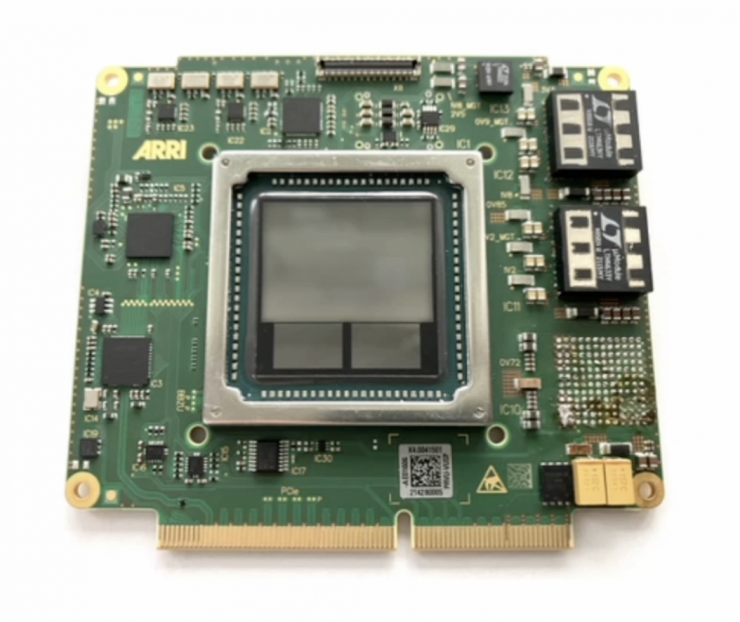
The images will all match, and that is all possible through a new board. ARRI replaces the main board that has the FPGA on it with a new board that has a faster chip on it. This new board also has extra memory on the chip. So now there’s more memory than they had in the past, and the chip can access the memory much faster. That, of course, generates more heat, but this new chip is very cool because it has something called a lidless design. Usually, you have a chip and then there’s a packaging around it, like a little aluminum box, which is nice, except now the heat has to go from the chip to the aluminum box and to the cooling component. As this new chip doesn’t have a lid, it’s a naked chip, so ARRI can attach the radiator fins directly to the chip and therefore much more efficiently cool the whole thing.
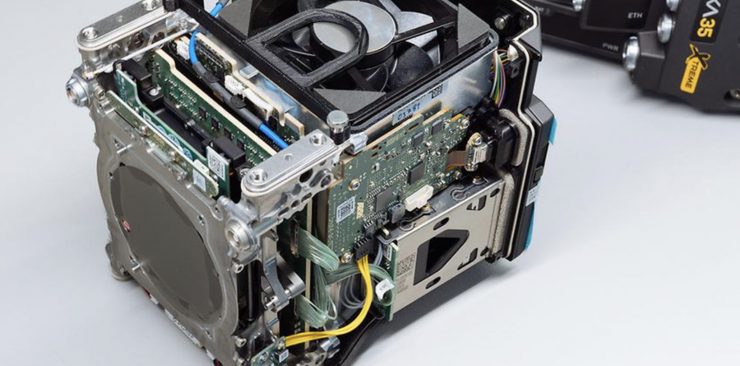
Actually, the main board in the ALEXA 35 Xtreme is the same board that is used in the ALEXA 265.
How fast does it go?
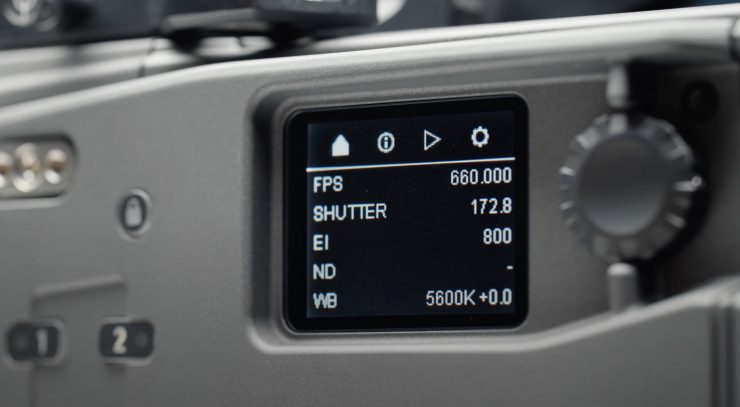
I am glad you asked! The camera has two different operating modes, depending on how fast you want to shoot. There is a lot to unpack here, so let’s get on with it.
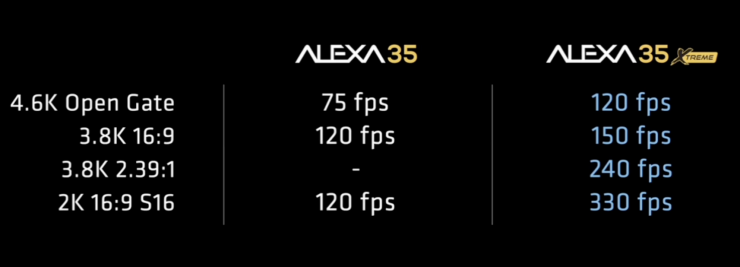
In the Xtreme, you can go to 120fps in 4.6K Open Gate, and 150fps in UHD. A new 3.8K 2.39:1 recording mode, which didn’t exist in ALEXA 35, but is now available on the ALEXA 35 Xtreme, allows you to go to 240fps. If you drop to 2K, you can get up to 330fps.

So that’s already pretty good, but then there’s a special mode ARRI has called Sensor Overdrive, which increases that again. In this mode, you can do 165fps in 4.6K Open Gate, UHD and 3.8K 3.39:1 now goes up to 240fps, and 2K goes to 660fps.
So, what is Sensor Overdrive & how does it work?
Sensor Overdrive is a special mode where the sensor readout time is reduced. In fact, ARRI has cut it in half from what it was. That allows the highest maximum frame rate, and it’s only available in the new ARRICORE codec, which I will talk about later in the article.
In Sensor Overdrive, the native ASA is 1600. You turn it on by going to the frames per second menu. Where you see the list of frames per second, there’s a new button called Overdrive. If you click that button, you get a notice that tells you all the trade-offs. Then, when you click confirm, it’ll show you in the home screen as well as on the SDI out.
Sensor Overdrive is a much, much faster way to run the camera, but there are some trade-offs and caveats you need to be aware of. One of them is that the exposure index is now limited from 800 to 6400. The maximum shutter doesn’t go all the way to 356°, and only goes to 340°.
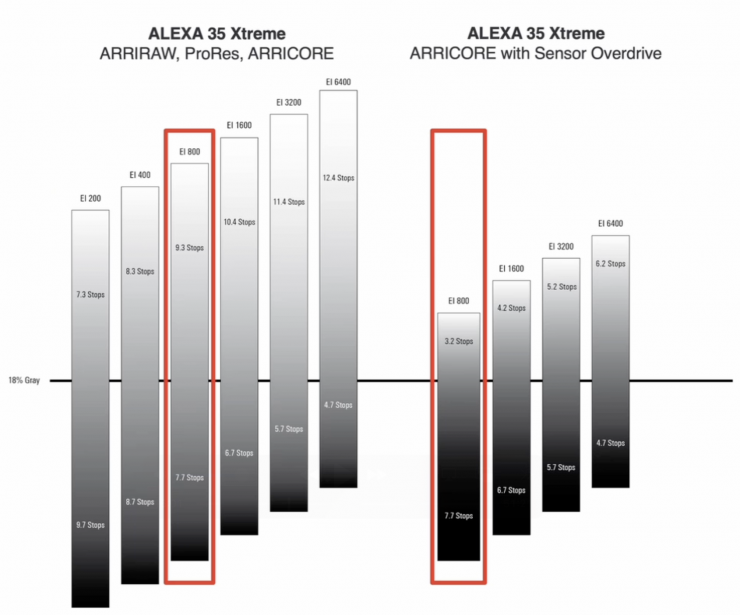
Enhanced sensitivity is also disabled, and the biggest caveat is that you only have 11 stops of dynamic range. That’s kind of a big deal, the 11 stops of dynamic range. If you look at the ALEXA 35’s 800 ASA, you have 9.3 stops above medium gray and 7.7 stops below medium gray, and everybody’s happy! Now, if you want the higher frames per second, you would turn on Sensor Overdrive, and that takes away six stops from the high end, which of course, makes it really challenging to shoot.
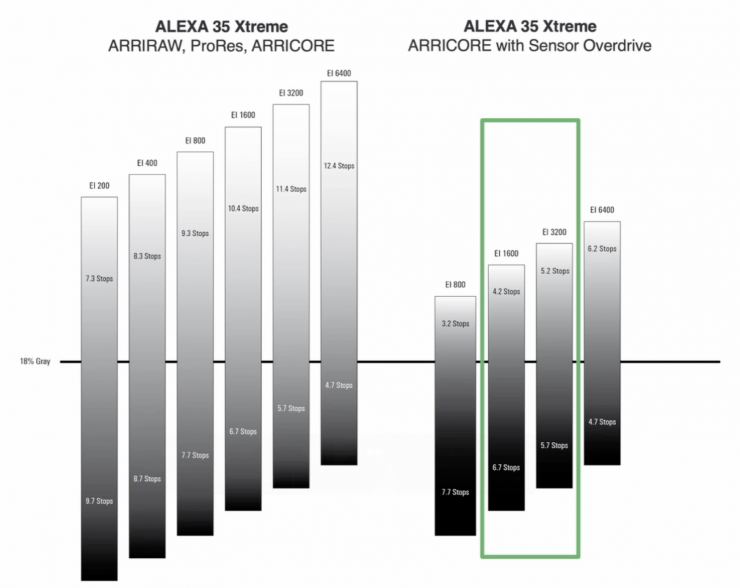
What ARRI has found during extensive testing is that it is probably best to shoot somewhere between EI 1600 and 3200, so you have some more dynamic range above medium gray. This makes sense because you don’t want to be in a place where you have 7.7 stops in the dark and 3.2 stops at the bright end of things.
If you want the highest frame rates, you can use Sensor Overdrive as it utilizes the same Reveal color science, so it’ll match all the other stuff, however, the 11 stops of dynamic range is critical. If you have six fewer stops of the highlight, and you don’t have enough light, you run into noise. If you have too much light, you run into clipping.
Now, anybody who’s been around the block knows how to properly expose, but I think some of the younger people who are used to 17 stops of dynamic range can get a little sloppy with exposure. That is something you can’t do with Sensor Overdrive.
Sensor Overdrive works best in controlled lighting situations, and if the desired frame rate is also available without Sensor Overdrive, ARRI would always recommend, you use it without Sensor Overdrive.
If you do have to use Sensor Overdrive, ARRI also recommends you shoot somewhere between EI 1600 to 3200 to extend the highlights. Because if you get more grain, that can be fixed in post, but if you run into clipping, that cannot be fixed.
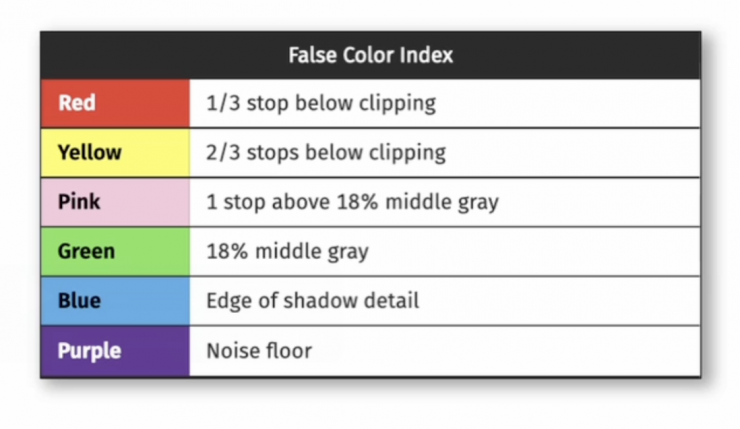
False color will work in exactly the same way when in Sensor Overdrive because false color is a relative system. So red is always one-third stop below clipping, disregarding what your absolute dynamic range is.
ARRI really strongly recommends working with false color and keeping an eye on the clipping level. You should always shoot tests. Going from 17 to 11 stops is a huge difference. In saying that, I have seen test shots where Sensor Overdrive was used at 3200 ASA, and it was pretty comparable to 800 ASA with it turned off when it comes to highlight protection.
What’s the technical reason why the dynamic range has to drop so much?
It has to do with how ARRI achieves that dynamic range. In the very first Alexa documentation, ARRI talked about single gain and dual gain. Single gain is when you read the sensor out, and that’s it, whereas dual gain is when you read the sensor out, and you then take part of the image and amplify it more, and then take part of the image and amplify it less. You then combine those two, so the two single-gain images get combined into a dual-gain image, and that gets you the extra dynamic range.
In Sensor Overdrive, ARRI is essentially just using a single gain image, which allows them to read out the sensor faster, which is also good for anyone shooting LED walls, because now they have a shorter amount of time to synchronize the camera sensor to the LED wall.
The ALEXA 35 has a very short rolling shutter, and in sensor overdrive, it’s halved.
ARRI had long discussions about whether they should even make Sensor Overdrive available because you don’t get the dynamic range people are used to from the ALEXA 35. In the end, ARRI recognized that their customers are professionals, and they know what they’re doing, so they would rather give them this tool rather than withhold it from them.
At least in my opinion, it’s better to have it and deal with the compromise than not have it at all. ARRI prefers to use the term trade-off, as you get the higher performance on one end, but there’s a trade-off on the other end for that.
I would prefer to have something that is technically possible and deal with the caveats, rather than not have it at all. Camera companies should be pushing the boundaries and not holding back.
ARRICORE
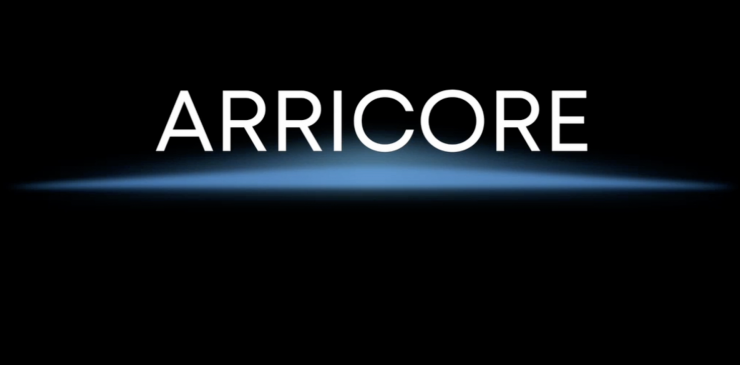
- Cinematic RGB quality with efficient compression
- Faster proxy generation for more efficient post workflows
- Full creative control in post-production
- 50% lower data rate compared to ARRIRAW
- Seamless integration with ARRI tools and partner software
- Futureproof RGB codec optimized for ALEXA 35’s 17 stops of dynamic range and beyond
- 18 bit linear image data from the ALEV4 sensor stored in a RGB file in a logarithmic coding (called “Sensor Log” by ARRI)”
- Enabling higher in-camera speeds in ALEXA 35 Xtreme with up to 330fps in regular or up to 660fps in Sensor Overdrive mode
- Flexible adjustments in post-production such as exposure index, white balance and tint
- MXF essence wrapping documented in SMPTE RDD 61:2025 – ARRICORE
ARRI has a new codec called ARRICORE that is only available with the Xtreme or cameras that get upgraded to the Xtreme. ARRICORE is a de-bayered and compressed RGB recording codec available for ALEXA 35 Xtreme and all future cameras. ARRICORE is not uncompressed. It uses a sophisticated new compression method for RGB data.
ARRIRAW offers uncompromised image quality; however, ARRI has had a number of customers who tell them that they can’t afford to use it, and they wanted them to make something that’s high quality, but with a lower data rate. In ARRIRAW, the camera doesn’t have to do a lot of processing. So the bottleneck you run into is the recording speed of the drive.
ARRI spent quite a long time trying to figure out this puzzle. The problem they always ran into was that anything that gives you higher image quality at compression levels needs a lot more processing power.
When the ALEXA 35 was being designed, they didn’t have that amount of processing power, but with the ALEXA 35 Xtreme, they now do.
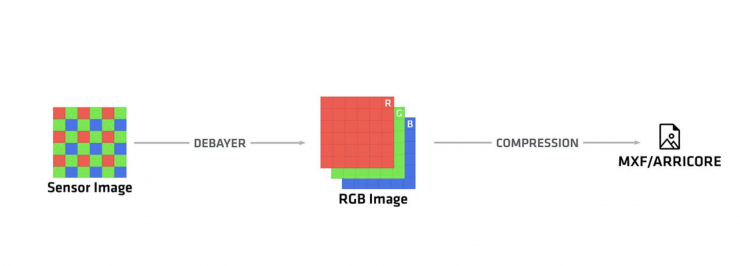
ARRICORE is a next-generation RGB codec. It is not RAW, it is RGB. ARRI is debayering in camera, and then they are encoding and doing a compression of the signal in the camera as well. ARRI claims this delivers superb image quality with post-flexibility at a low data rate. Color wise ARRICORE is as flexible as ARRIRAW or ProRes since REVEAL Color Science, ARRI’s image processing engine, develops all recording formats to the same target (LogC4) within the same pipeline.
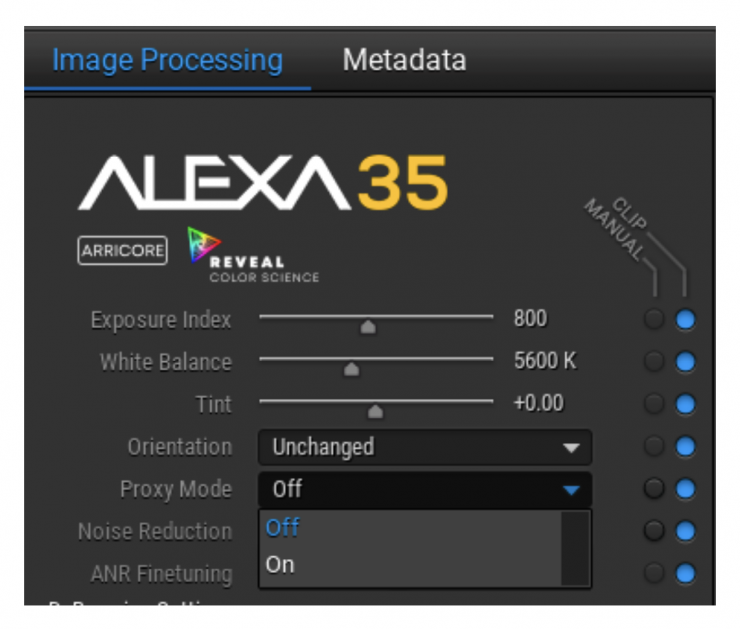
With ARRICORE, just like RAW, the sensitivity, white balance, and tint are not baked in, and you can change them in post.
Also, the way ARRICORE is encoded allows you to do a very fast proxy generation. So in post, you can very quickly get a half or quarter resolution image out of it, faster than with other codecs.
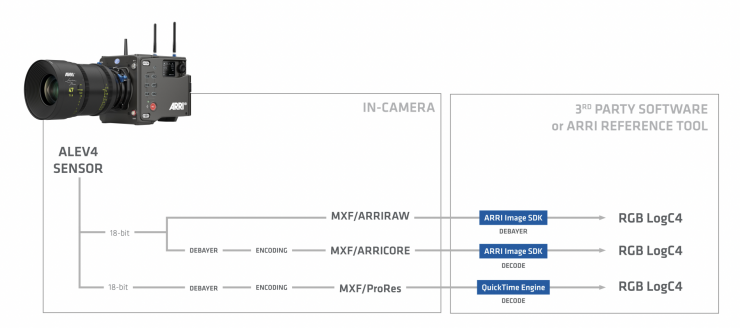
ARRICORE embeds metadata directly within the file header, encapsulated in the MXF wrapper. All metadata elements are formally defined, documented, and maintained in accordance with official SMPTE Registered Disclosure Documents (RDDs). The mapping of the ARRICORE bitstream and its associated metadata into the MXF container is specified in SMPTE RDD 61, while SMPTE RDD 55 defines metadata elements that are independent of the codec.
Since there’s an encoder in the camera and a decoder in ARRI’s software developer kit, which they use for the ARRI Reference Tool, third parties like Film Light, Blackmagic, etc., can use the decoder. ARRI has been working for the last year and a half with the third-party tool providers, and they are actively working on implementing ARRICORE right now.
ARRI will continue to work on the ARRICORE decoder to make it better
ARRICORE also has a much lower data rate than other existing codecs ARRI has been using. It has about half the data rate of ARRIRAW, and a little less than ProRes 4444. It is even less than ARRIRAW with HDE, even though that’s not a really fair comparison, because ARRIRAW with HDE happens during the download.
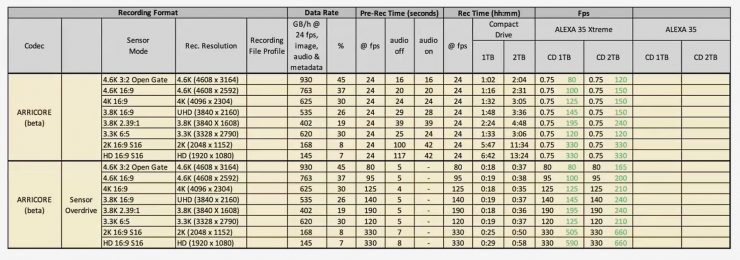
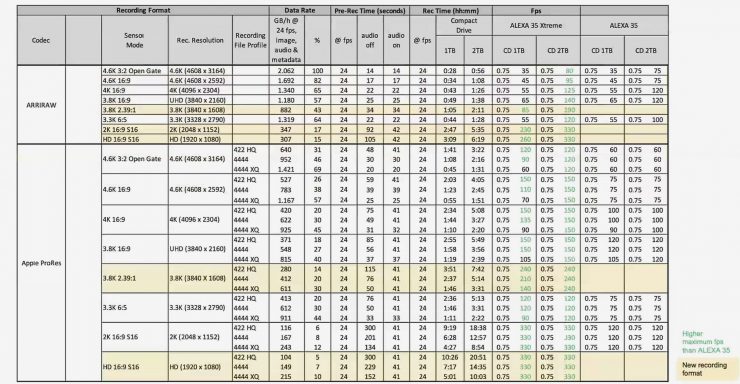
You do need to use the Codex 2TB Compact Drive to capture the highest frame rates. If you are using the 1TB Compact Drive, then the highest frame rates will be slightly reduced.
ARRICORE can certainly reduce the number of drives you need on the set and your download times. Your recording time doubles that of ARRIRAW, and your download speed halves.
Both ARRIRAW and ARRICORE start with 18 bits. So ARRI is taking 18 bits, and they are sticking them into both of these.
ARRICORE is also fully compatible with ARRI Textures, allowing cinematographers to define the image’s structure and character at the point of capture. As with ProRes and ARRIRAW, the ARRI Textures are baked into the image.
ARRICORE provides the same on-set and post-workflows as with existing ALEXA 35 codecs. Everything works the same way. Every look file, textures, metadata, and audio all work the same way. It’s compatible with the existing 1TB and 2TB Codex Compact Drives. However, it is not compatible with the 1TB Compact Drive Express, as that is for ProRes only.
Currently, there’s one ARRICORE flavor. ARRI is looking into further optimizations that would allow them to run ARRICORE at a lower data rate without making compromises on image quality.
ARRICORE is being released initially as a beta version, and early user feedback will help to fine-tune its performance.
So ARRI now has three codecs in the camera. There’s ARRIRAW, that’s the highest image quality, uncompressed, unencrypted, and really the standard choice for the largest productions in the world. Then you have the new ARRICORE, which is claimed to offer great image quality at a lot lower data rates, where the sensitivity, white balance, and tint are not baked in, and you get the most extreme frame rates. Finally, there is the workhorse Apple ProRes, which also has excellent image quality. However, sensitivity, white balance, and tint are baked in on set, but you do have the option to use different flavors. ProRes is still the most universally used codec in the business, and you can give anybody a ProRes file, and they know how to play it back
5x Longer Pre-recording

With ProRes and ARRICORE, the bottleneck is the processing of the camera and how fast it can do the compression. With the extra processing power in the Xtreme, ARRI now has all this additional memory so that they can now offer five times longer pre-recording.
In high-speed shooting, pre-recording is really important, because if you’re doing a high-speed shoot, and you push the button a little too early, you’re having tons and tons of footage of nothing before your event happens.
So pre-recording becomes very important for high-speed, but it’s also super important for nature documentaries. With these higher speeds, ARRI now has the longest pre-recording times of any cine camera.
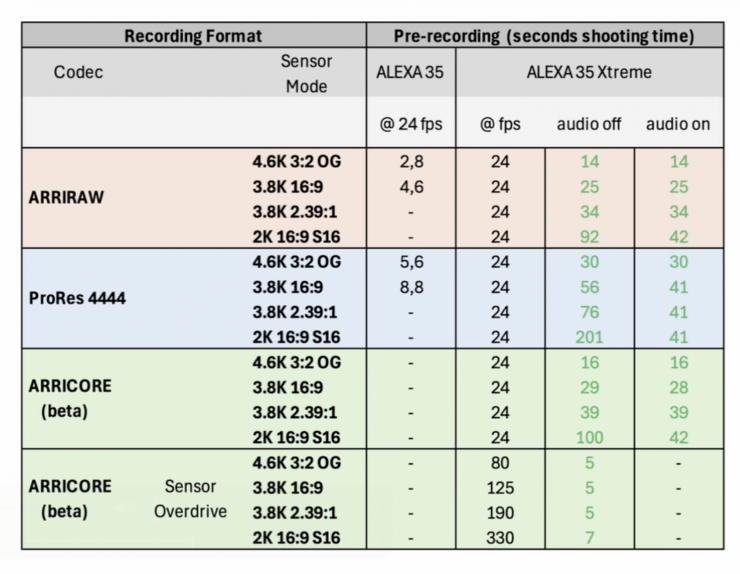
You get about 30 seconds in ProRes 4444 in OpenGate at 24fps, or a total of five minutes in 422 HQ at HD resolution at 24fps.
That’s a long time of pre-recording. Now, that said, at this point in time, these long pre-recordings are with audio off. With audio on, it’s capped at 42 seconds. ARRI thinks they know how to change this, but at this stage it is something that wasn’t ready for the first customer shipments. For the time being, there will still be this difference with audio off and audio on, but hopefully in a couple of months, it’s all going to be sorted out.
Other Improvements
As the processing power is better in the Xtreme, the camera actually uses less power. You can get about a 10% lower power consumption in the camera, which means 10% more battery life.
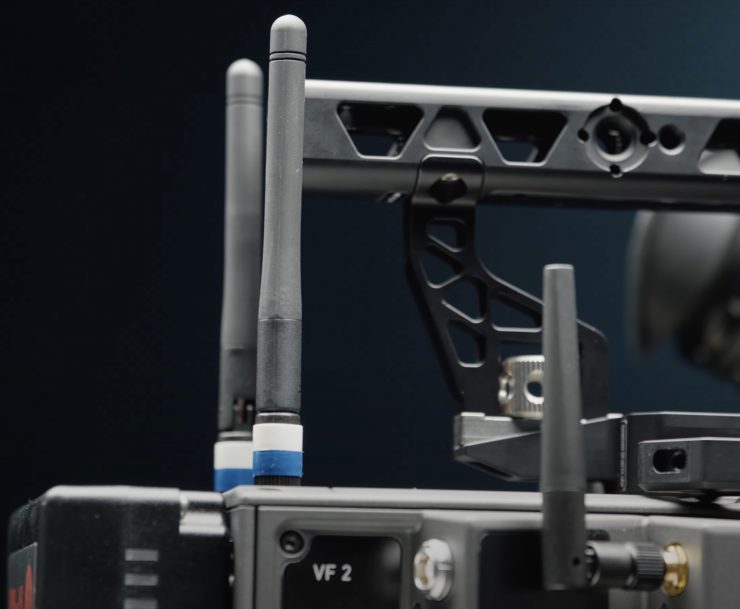
ARRI has also improved the Wi-Fi quite a bit. So they can do 5GHz now, and they also have a new antenna. It’s got the blue and the white bands, and that can do 5GHz, but it’s also better at 2.4GHz than the little stubby antenna the ALEXA 35 has. This new antenna may not be the most loved antenna in the world; however, ARRI has been doing test after test after test, and they found it has the best performance. The new antenna does have that little hinge that sometimes breaks, but conversely, with rigid antennas, it can rip out the SMA connector from the camera. So, arguably, it’s better to break the antenna than have it rip out the SMA connector, which can be a costly repair.

Wi-Fi roaming for mesh networks has also been added. That’s very popular these days, and just like your iPhone has, the camera now also keeps a list of previously known Wi-Fi networks. You can also tell it to optionally automatically reconnect to a previously known Wi-Fi network. It also shows you the signal strength. Another WiFi improvement is that the camera is now aware of where in the world it is (or at least what the nearest WiFi router claims), and it will automatically use the greatest signal strength that is legal in that location. In the past, the ALEXA 35 WiFi had to be set to a WiFi signal strength that was legal everywhere in the world, so the lowest common denominator, but now it can increase signal strength up to the local legal limit
Refined Recording Formats

This is very interesting. ARRI has taken a look at the log files that they get whenever any camera is serviced. These log files are downloaded and looked at anonymously, so ARRI doesn’t know which camera they were from.
They now have hundreds and hundreds of these log files that they have analyzed. What they found is that despite the ALEXA 35 having a plethora of recording formats, it turns out that very few people were actually using all of them.
In fact, 60% of customers shoot OpenGate. So what ARRI has now done is to eliminate some of the recording formats that weren’t really being used at all.
They have also taken away all the in-camera down-sampling and in-camera de-squeezing, because that was very rarely used. So now there are just eight recording formats, and the sensor mode is exactly the same as the recording resolution.
So in OpenGate, you record OpenGate, everybody’s happy. Then in 4.6K 16:9, you use the whole width of the sensor, but in a 16:9 aspect ratio, and you record that. In 4K 16:9, you do a little bit of a center crop, and then with UHD, it is slightly smaller. The new 2.39:1 recording mode has UHD width, but a cinema scope aspect ratio.
Eight sensor modes, the same for ARRIRAW, ARRICORE and Apple ProRes
4.6K 3:2 Open Gate
Maximum image quality, maximum resolution and maximum flexibility in post for shooting with spherical and anamorphic lenses. The image area is larger than traditional Super 35 film, so not all Super 35 lenses cover. The sensor mode with the highest data rate.
4.6K 16:9
Full sensor width in a 16:9 format that suits many spherical Super 35 and all large format lenses, with extra room for flexibility in post. Lower data rate than 4.6K 3.2 Open Gate.
4K 16:9
For projects using spherical lenses for a 16:9 or 1.85:1 deliverable with a 4K Cine resolution (4096 horizontal pixels). Also useful for spherical 16:9 or 1.85:1 projects with a UHD deliverable that want a little extra area for resizing, repositioning, stabilizing, or tracking in post. The sensor area is close to the traditional spherical Super 35 film format for compatibility with a wide range of Super 35 lenses.
3.8K 16:9 (UHD)
For projects using spherical lenses for a 16:9 UHD deliverable. This is the 4K recording format with the lowest data rate for the lowest cost and with the smallest image circle for maximum compatibility with spherical Super 35 lenses.
3.3K 6:5
For projects using 2x anamorphic Super 35 lenses for a 2.39:1 deliverable. Negates the necessity of cropping Open Gate footage and fulfills 4K mandates.
2K 16:9 S16
For maximum frame rates with Sensor Overdrive on and off. Sometimes used to have extra padding around an HD deliverable. Close to the traditional Super 16 film format, and therefore most Super 16 lenses cover.
HD 16:9 S16
Same maximum frame rate as 2K 16:9, but native HD. For shooting HD without any cropping/resizing in post. Also used for live applications.
Close to the traditional Super 16 film format, and therefore most Super 16 lenses
While I can understand ARRI simplifying the recording options, I would have preferred that they had kept them all, even if it meant having a separate sub-menu so you don’t clutter up the UI.
More to come
As the new camera now has maximum processing power and a faster FPGA, ARRI has more memory. There is also an extra processing acceleration board that they have put in that will allow them to do some other software stuff in the future. ARRI told me that they have a lot of plans for this camera in the future.
ARRI has also had a lot of DPs asking for a user button to toggle the Viewfinder desqueeze on and off, so they will be adding that. They are also working on a 10″ live production monitor that a lot of people have asked for.
They have also changed the shutter angle range from 5 degrees to 1 degree. With the exposure time, you were able to go down to one degree. The shutter angle was only five. ARRI finally noticed the discrepancy, and they are going to make it one degree.
They are also putting LDA lens tables for the Enzo primes in the camera.
The only caveats at the moment are that the Hi-5 and the CCM-1 camera control monitor still need a software update to be fully compatible with the Xtreme.
ARRI is working on that, but they won’t have that immediately available.
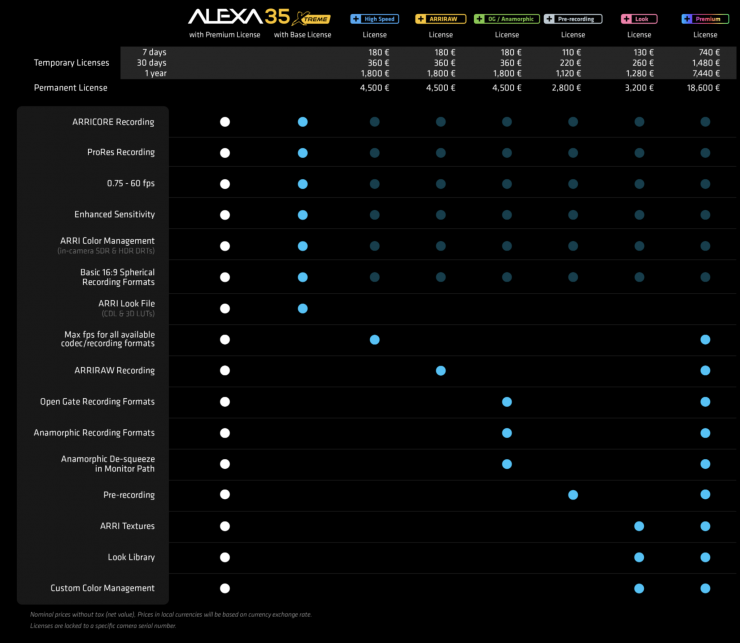
ARRI is now shipping and taking orders, and they already have some cameras in stock in Munich. They are also in the process of shipping out the first upgrade kits.
The ARRI ALEXA 35 XTREME Premium Production Set (PL/LPL, 15mm) is $86,270 USD.
The ARRI ALEXA 35 XTREME Base Entry Set (LPL/PL, CCM-1, CDX) is $57,330 USD.
